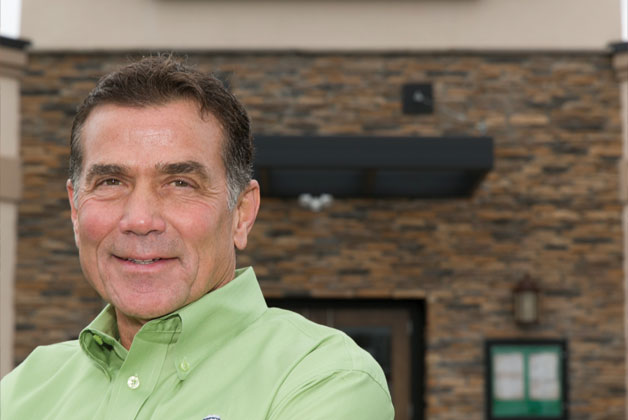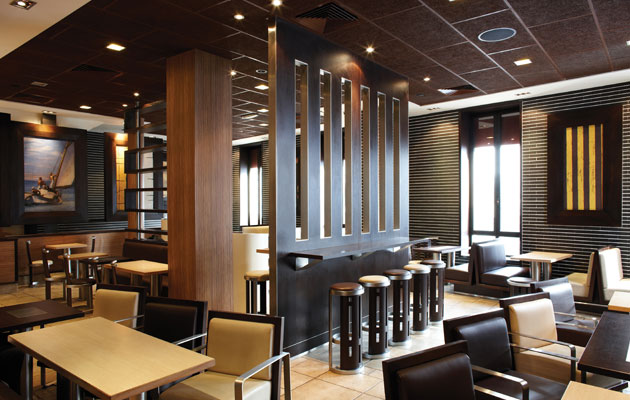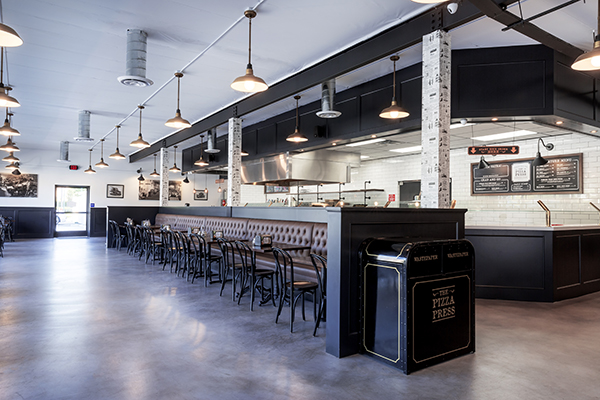One of the top dogs in the casual-dining space back in the day, Bennigan's suffered a bad case of what Paul Mangiamele calls "brand drift." In taking its eye off the ball, Bennigan's failed to make changes that would keep the chain relevant and competitive. Mangiamele, an industry veteran who took the reins in May 2011 and has written about the chain's renaissance in his book "Bennigan's Return to Relevance...Bleeding Green 25/8," leads the charge to rebrand.
In 2008, Bennigan's parent, Metromedia Restaurant Group, filed for Chapter 7 bankruptcy protection. All corporate units were closed and the few franchised locations that remained open kept the once-iconic brand alive. Since emerging under new ownership, the company is in the process of reinventing itself.
rd+d: You left a red-hot fast-casual gig for a challenged brand in the challenged casual dining segment. What do you see driving Bennigan's and casual dining's comeback?
PM: The real differentiator is this wonderful thing called service. Over the past 10 or 15 years, the deterioration of training and the correct profiling of service positions has been endemic throughout the industry, but especially in casual dining. If you let that slip, the option of going to a fast-casual operation where there's no need to leave a tip becomes more attractive to consumers. We're putting a huge focus on our food and our accommodations, but we're also sharply focused on providing genuine warm, friendly Irish hospitality. That's what's going to drive our resurgence and restore us to our preeminence in casual dining.
rd+d: How do you define "brand drift", the term you used to describe the decline of Bennigan's and some of its peers in the casual dining segment?
PM: It's when you get so far from the original pillars of operations, food, innovation and service, the things that made you successful in the first place, and don't bother to update and reinvest in your physical plant. Ultimately, guests begin to sense a lack of respect for their patronage. Today, because of technology and social media, the lifecycle for staying fresh is very short. From a physical plant standpoint, we know from extensive research that guests want a newer, hipper, more high-energy, fresher look wherever they go. There are a lot of brands that haven't paid attention and have failed to maintain an emotional, enduring connection with guests. With respect to such brands — and we were among them — the industry isn't over-built, it's under-demolished.
rd+d: How did you set out to correct that brand drift from a physical plant perspective?
PM: We started with 360-degree research, looking at everything from real estate to prototype, design, artifacts, space dedicated to dining, bar, patio and back of house, from equipment to POS systems. Nothing was left to chance. We've also focused on being much more sensitive to the investment-to-sales ratio so that our franchisees can generate a compelling enough return on investment to continue to build out different markets. We reduced our footprint from around 12,000 square feet to around 5,000 square feet with a patio. We've also given our new prototype a fresh, hip, forward-thinking look but one that at the same time pays respect to our heritage.
rd+d: That's an interesting design challenge. What elements were used to bridge the old and the new?
PM: In the old Bennigan's there were Tiffany lamps over the booths. We don't have those anymore, but we took the stained glass effect and used it as a wall in front of the kitchen. It lets you see a bit of the action without seeing and hearing everything. It's very cool, and it provides the connotation that everything is hand crafted and made fresh. We always had booths, but we put in a lot more rich-looking, leather booth treatments. We used to have an elevated center bar that took up more than half of the dining space. In the new prototype, we have a straight bar along one of the side walls. It's richly appointed and backlit, and wall graphics highlight the local area. The dining space is very open and the seating is comfortable. We've even created a Bennigan's playlist that's used in every location. Everyone who comes in, whether Boomer or Millennial, will hear a shuffle of songs that hit their favorites or their era.
rd+d: There's a lot of excitement about the renaissance, yet Bennigan's continues to close some units.
PM: The old saying, that sometimes you have to subtract to be able to add, is true. If there are dated, unprofitable restaurants then we have to make the hard decision to either relocate or close them. That's part of our responsibility to the brand. It's done carefully with our franchisees, through many one-on-one consultations, in an effort to try to retain the trade area. If after all of the analysis is done, the consensus is that we have to close then we have to do that and move on.
rd+d: As part of the bankruptcy, all corporate units were closed. What's the outlook now for corporate development?
PM: We have a new flagship corporate store under development in Dallas. I feel we need that for training and R&D. I also believe that as a franchisor we need to have skin in the game as we work to continually reinvent ourselves. Before, the cycle was 5 to 10 years but now it's more like a 5- to 10-month cycle. You have to constantly refresh and reinvent to stay relevant. We take that responsibility very seriously. We will also have a corporate store in Chicago, on Michigan Avenue.
rd+d: And what about Bennigan's development plans in general? What's in the pipeline?
PM: We're pursuing a dual-pronged strategy of domestic and international development. There's a pipeline looking at three to five years and we're averaging one new restaurant a month right now. With already- and soon-to-be-executed agreements, I see us increasing that from one a month to two a month. We're not there yet, but we certainly have gained momentum and traction and I want to build on that velocity.
rd+d: What does "Bleeding Green 25/8" in the title of your book refer to?
PM: Bleeding green refers to our brand's Irish heritage and our commitment to provide warm Irish hospitality. The 25/8 refers to our attitude, our work ethic, our purpose to live and breathe the brand to the extent that we fulfill our mission to guests. When we do that, there's nobody that can touch us.
rd+d: With Bennigan's "return to relevance" now underway, what are you most worried about? What keeps you up at night?
PM: The things I can't control — commodity pricing, federal and state mandates, economic swings. You have to be able to think three or four moves ahead, be able to see around corners and try to predict as much as you can based on historical knowledge and on where you want to take your brand. The market share pie isn't getting any bigger but the number of units serving food is. In addition to traditional competitors, you now have grocery stores and c-stores that are quasi restaurants. If they're gaining a visit, someone else is losing that share. That's why staying relevant is so critical. If you don't, you're going to influence customer defection. We will not be a victim of brand drift ever again. It keeps me up a lot of nights, by the way. Don't forget that I have an extra day and an extra hour to agonize over!




